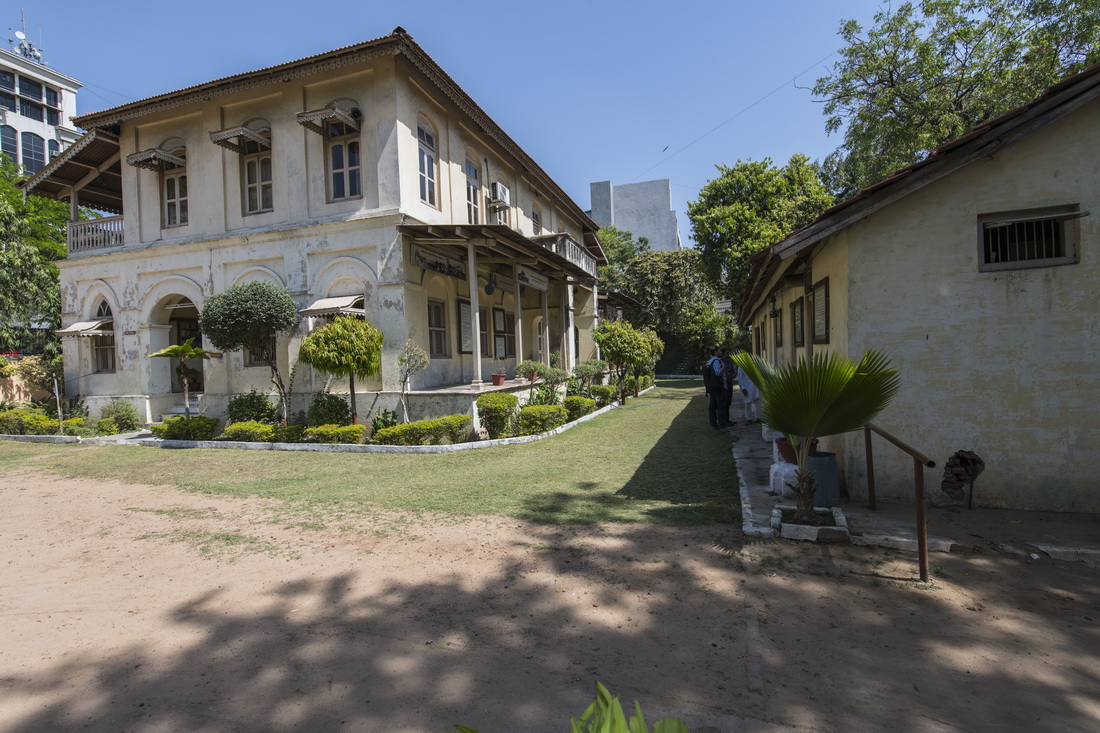Nuclear waste
Source: TH
Why in News: Recently, India inserted the core into the vessel of its long-awaited prototype fast breeder reactor(PFBR).

Overview of Nuclear Waste:
Nuclear Fission Process:
- Neutrons bombard atomic nuclei in fission reactors.
- Absorption of neutrons destabilizes nuclei, leading to their breakup.
- Energy and nuclei of different elements are produced in this process.
Formation of Nuclear Waste:
- Example: Uranium-235 nucleus can fission into barium-144, krypton-89, and three neutrons.
- Elements unable to undergo further fission become nuclear waste.
- Spent fuel refers to irradiated fuel unloaded from reactors.
Composition of Spent Fuel:
- Contains radioactive fission products and elements from uranium decay.
- Handling spent fuel poses challenges due to its heat and radioactivity.
- Initial storage in underwater pools, followed by transfer to dry casks.
Global Inventory of Spent Fuel:
- Countries with nuclear programs have amassed significant amounts of spent fuel.
- Examples: U.S. (69,682 tonnes), Canada (54,000 tonnes), Russia (21,362 tonnes).
Long-Term Storage Requirements:
- Storage periods can extend for millennia due to radioactivity levels.
- Necessitates isolation from human contact for durations longer than modern human existence.
Management of Nuclear Waste:
Dry Cask Storage:
- Spent fuel cooled for a year in pools before transfer to dry cask storage.
- Fuel placed in large steel cylinders within inert gas-filled chambers.
- Cylinders sealed and placed in larger steel or concrete chambers.
Reprocessing Technology:
- Reprocessing involves separating fissile from non-fissile material in spent fuel.
- Chemical treatment used to isolate fissile material.
- Requires specialized facilities and personnel due to hazardous nature.
- Offers higher fuel efficiency but is costly.
Why Supreme Court Banned Tiger Safari in Some Jim Corbett Areas?
Source: TOI
Why in News: The Supreme Court has recently prohibited tiger safaris within the core regions of Jim Corbett National Park in Uttarakhand.
Tiger safari
A “tiger safari” typically denotes a designated area within or adjacent to a tiger reserve where visitors can observe tigers and other wildlife in their natural surroundings.
- NTCA Guidelines, 2012: The concept of a tiger safari in the wilderness was initially introduced in the Guidelines for Tourism by the National Tiger Conservation Authority (NTCA) in 2012. These guidelines permitted such facilities in the buffer zones of tiger reserves.
- Guidelines Evolution: In 2016, the NTCA issued specific guidelines for Tiger Safaris, focusing on the rehabilitation of injured, conflicted, or orphaned tigers. It emphasized that tigers for safari purposes should not be sourced from zoos. Additionally, these guidelines stated that a tiger safari proposal could only be considered for tiger reserves that had already reached 100% of their tourist carrying capacity.
- Central Zoo Authority (CZA): A significant amendment took place in 2019 when the NTCA allowed zoos to supply animals for tiger safaris. The Central Zoo Authority (CZA) was assigned the responsibility of selecting animals for this purpose.
- Wildlife (Protection) Act, 1972: While the act does not explicitly define “tiger safari,” it mandates that no construction of commercial tourist lodges, hotels, zoos, and safari parks shall be undertaken inside a sanctuary without prior approval from the National Board constituted under the Act.
Pros of Tiger Safari:
- Reduced Tourism Pressure: Establishing safari parks in buffer areas offers an alternative attraction, potentially decreasing visitor numbers in core reserve areas.
- Sanctuary for Unfit Animals: Safari parks provide a controlled environment within the reserve for injured, orphaned, or conflicted tigers unfit for release into the wild.
- Support for Local Livelihoods: Safari parks can generate income and employment opportunities for local communities through tourism-related activities like guiding and hospitality services.
- Economic Development: Parks like Pakharau near Corbett Tiger Reserve distribute economic benefits more evenly, benefiting areas previously overlooked.
Cons of Tiger Safari:
- Increased Tourism Demand: Opening new safari routes hasn’t decreased vehicle crowding but has attracted more tourists, intensifying pressure on the reserve.
- Display of Rescued Tigers: Displaying rescued tigers in safari parks diverges from guidelines requiring assessment before display, potentially compromising animal welfare.
- Habitat Disturbance: Prioritizing individual welfare in safari parks may disrupt species’ interests, leading to disturbances in wild habitats.
- Concerns with Specific Safari Parks: Ranthambore safari park (launched in 2016) raises structural integrity and wildlife stress concerns due to introducing zoo animals into the wild habitat.
- Wildlife Stress: Introduction of captive animals into protected forests’ safari parks has caused stress and aggression among resident species, as observed with leopards in Nahargarh Biological Park, Rajasthan.
The Supreme Court has expressed its view on tiger safaris through various directives and considerations:
- Illegal Tree Felling Criticism: Criticized the Uttarakhand State government for illegal tree felling for the Pakhrau Tiger Safari, citing a Central Empowered Committee report.
- Investigation Orders: Directed the CBI to complete its investigation into alleged irregularities within Corbett Tiger Reserve within three months, as per Uttarakhand High Court’s instructions.
- Tiger Safari Regulations: Allowed tiger safaris only in the peripheral and buffer zones of Jim Corbett National Park.
- Approval for Pakhrau Tiger Safari: Expressed inclination towards approving the establishment of the Tiger Safari at Pakhrau in the buffer area of Corbett Tiger Reserve.
- Safari Park Criteria: Stated that safari parks are designated for “injured, conflicted, or orphaned” local tigers, not those sourced from zoos.
- Committee Formation: Ordered the formation of a committee to suggest ways to repair ecological damage caused by illegal construction and tree felling within Jim Corbett National Park within three months.
- Mandated the committee to assess environmental damage, identify responsible officers, recommend restoration measures, and evaluate the feasibility of tiger safaris in buffer areas with ecocentrism in mind.
Way Forward
- The Supreme Court’s stance aligns with conservation goals, emphasizing that tiger safaris should not merely replicate zoos within tiger reserves, indicating a commitment to preserving wild habitats and prioritizing the well-being of wild tiger populations.
- Authorities must carefully consider site-specific factors and develop guidelines that balance conservation objectives with local community needs and wildlife welfare.
- The establishment of tiger safari parks should be a thoughtful process based on a thorough evaluation of carrying capacity and ecological factors within each tiger reserve, rather than a routine practice.
Kochrab Ashram
Source: TH
Why in News: Recently, the Prime Minister unveiled the refurbished Kochrab Ashram in Ahmedabad, Gujarat, commemorating the 94th anniversary of the Dandi March.
About Kochrab Ashram:
Historical Significance:
- Founded by Mahatma Gandhi in 1915 upon his return to India from South Africa.
- Situated in Kochrab village on the outskirts of Ahmedabad, Gujarat.
- Initially named Satyagraha Ashram, reflecting Gandhi’s commitment to peaceful methods for India’s independence.
Establishment:
- Gopal Krishna Gokhale’s request prompted Gandhi’s return to India, recognizing his community organizing skills.
- Gandhi chose Ahmedabad for its association with his Gujarati roots and its potential for serving the country effectively.
- Gandhi began residing in a bungalow in Kochrab village on May 20, 1915, renamed as Satyagraha Ashram, provided by colleague Jeevanlal Desai.
- He stayed at Kochrab Ashram for around one-and-a-half years before relocating to the new Sabarmati Ashram campus.
Architectural Features: The ashram’s colonial-style building boasts a white-washed façade, reflecting its historical context and colonial influence.
Exercise ‘Bharat Shakti’
Source: TOI
Why in News: Recently, the Prime Minister observed the tri-service exercise ‘Bharat Shakti’ in Pokhran, Rajasthan.
About Exercise ‘Bharat Shakti’:
- Integrated Tri-Service Exercise: Conducted in Pokhran, Rajasthan, it highlights the capabilities of domestically manufactured defense equipment across all three branches of the military.
- Tactical Employment Demonstration: Demonstrates the strategic utilization of advanced technology in a tri-services setting to counter perceived threats effectively.
- Promotion of Indigenous Defense Systems: Showcases a variety of indigenous weapon systems and platforms, aligning with the nation’s Aatmanirbharata (self-reliance) initiative.
- Simulation of Multi-Domain Operations: Simulates realistic, synergized operations across land, air, sea, cyber, and space domains to exhibit the integrated operational capabilities of the Indian armed forces.
- Featured Indigenous Weapon Systems: Includes T-90 (IM) Tanks, Dhanush and Sarang Gun Systems, Akash Weapons Systems, Logistics Drones, and Robotic Mules.
- Indian Navy’s Contribution: Showcases Naval Anti-Ship Missiles, Autonomous Cargo Carrying Aerial Vehicles, and Expendable Aerial Targets.
- Indian Air Force’s Participation: Features indigenous aircraft such as the Light Combat Aircraft Tejas, Light Utility Helicopters, and Advanced Light Helicopters.
Parthenogenesis
Source: TH
Why in News: Researchers have made a notable advancement by genetically modifying a sexually reproducing fruit-fly species to reproduce without the need for sexual reproduction.

Parthenogenesis refers to reproduction without fertilization by males, leading to offspring originating from unfertilized eggs.
- Facultative Parthenogenesis: This occurs when organisms have the ability to reproduce both sexually and asexually. Examples include crayfish, snakes, komodo dragons, and sharks.
- Examples in Nature: Certain species like Drosophila mangebeirai and Drosophila mercatorum demonstrate facultative parthenogenesis, where isolated virgin females can produce offspring without mating.
Significance of Parthenogenesis:
- Adaptive Strategy: Parthenogenesis serves as an adaptive strategy for reproduction when environmental conditions are unfavorable for sexual reproduction.
- Population Maintenance: It allows species to thrive and multiply in environments with limited male population.
- Sex Determination: In some organisms like wasps and bees, parthenogenesis enables sex determination.
- Simplicity and Stability: It is considered the simplest, most stable, and straightforward method of reproduction.
- Support for Chromosomal Theory: Parthenogenesis supports the chromosomal theory of inheritance, affirming chromosomes as carriers of genetic heredity.
- Mutation Development: Advantageous mutant characteristics may emerge through this mode of reproduction.



